USER GUIDE FOR WIRELESS SENSOR TRANSMITTER WS433-M12F
| WS433-M12F-MN-EN-01 |
FEB-2020 |
This document is applied for the following products
| SKU |
WS433-M12F-T (for Aus & NZ) WS433-M12F (for other regions) |
HW Ver. | 2.5 | FW Ver. | 5.04 |
| Item Code | ATE-11 or ATE-12- | Digital ambient temperature sensor | |||
| ATH-11 or ATH-12- | Digital ambient humidity / temperature sensor | ||||
| ADP- | Digital ambient differential pressure sensor | ||||
1. Functions Change Log
| HW Ver. | FW Ver. | Release Date | Functions Change |
| 2.5 | 5.04 | NOV-2019 |
Change RF data rate by button |
2. Introduction
WS433-M12F(-T) is a Sub-GHZ wireless sensor module utiluzes the Sub-GHz technology from Texas Instruments, USA. This wireless module can be connected to many kind of digital sensor modules. Please refer to the table as above. This wireless module will automatically recognize the sensor module once plugged in. It will be configured the working parameters remotely by ModbusRTU master software or via Globiots platform. This wireless module is ultra-low power design which can last up to 10 year with a single AA battery.
3. Specification
| Sensor modules support | Compatible with all DULP sensor modules produced by Daviteq. Refer to the sensor table in the first page. List of compatible sensor modules depends on FW version of WS433-M12F(-T). ** DULP (Digital Ultra Low Power) |
| Sensor port connector | M12-female, 4-pin A-coding |
| Data speed | Up to 50kbps |
| Tranmission distance, LOS | 500m |
| Antenna | Internal Antenna |
| Battery |
01 x AA 1.5 - 3.6VDC, up to 10-year operation, depends on configuration
|
| Frequency Band | ISM 433Mhz, Sub-GHz technology from Texas Instrument, USA |
| Receiving Sensitivity | -110dBm at 50kbps |
| International Compliance | ETSI EN 300 220, EN 303 204 (Europe) FCC CFR47 Part15 (US), ARIB STD-T108 (Japan) |
| Security Standard | AES-128 |
| Operating temperature of PCB | -40oC..+60oC (with AA L91 Energizer) |
| Housing | Poly-carbonate, IP67 |
| Installation method | L-type bracket SUS304 , by M4 screws or double-sided 3M tape (included) |
| Product dimensions | 125x30x30mm |
| Net weight (without battery) | < 60g |
| Box dimension | 190x50x50mm |
| Gross weight | 100g |
4. Product Pictures
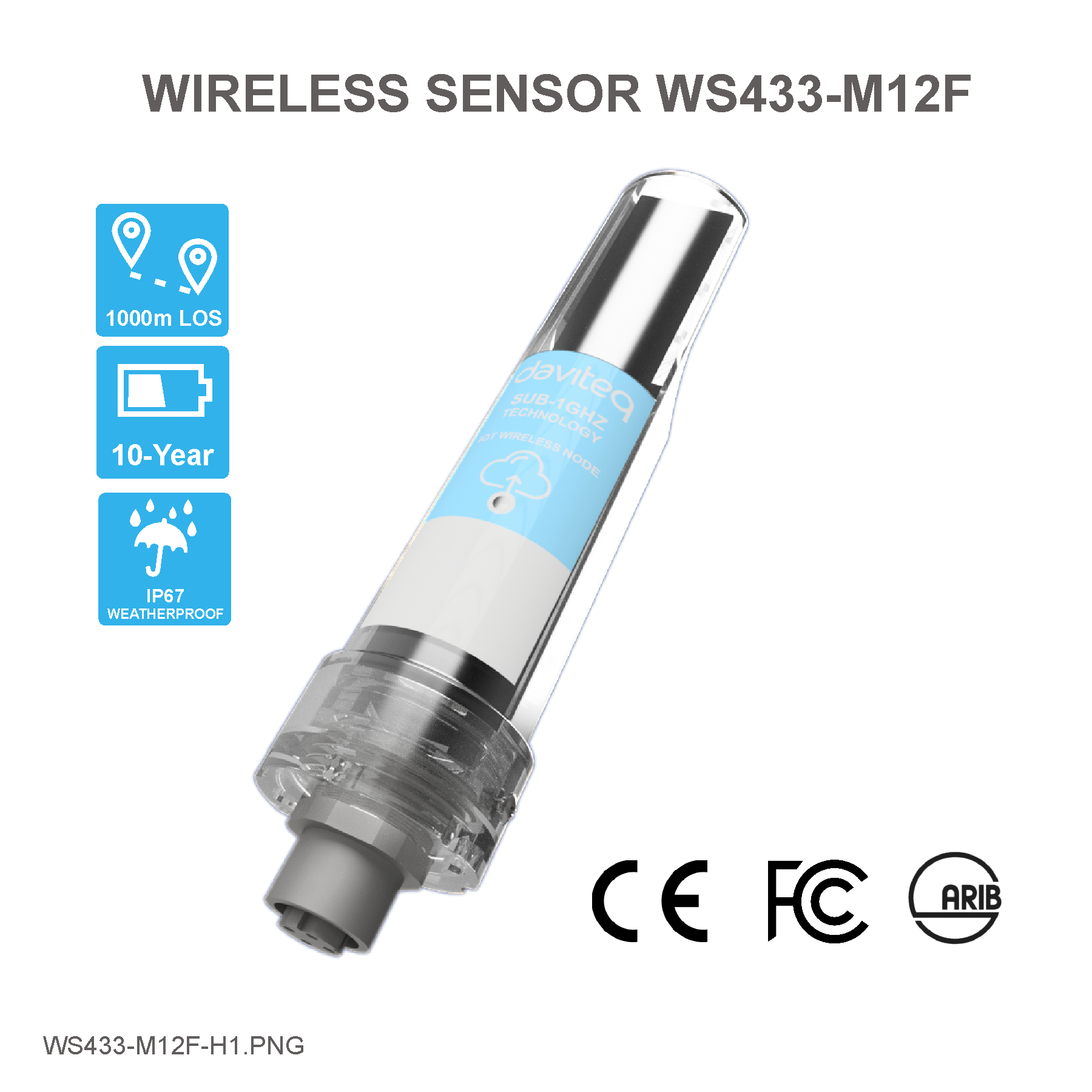 |
 |
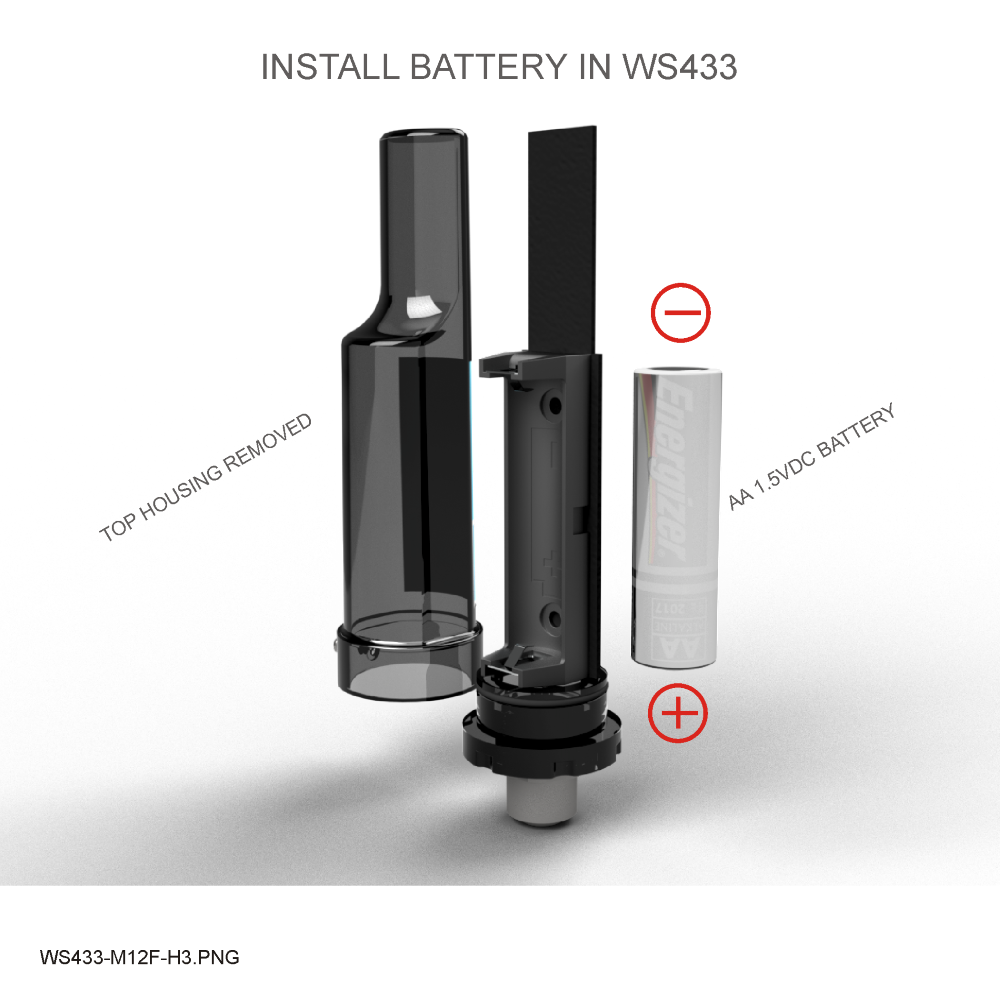 |
 |
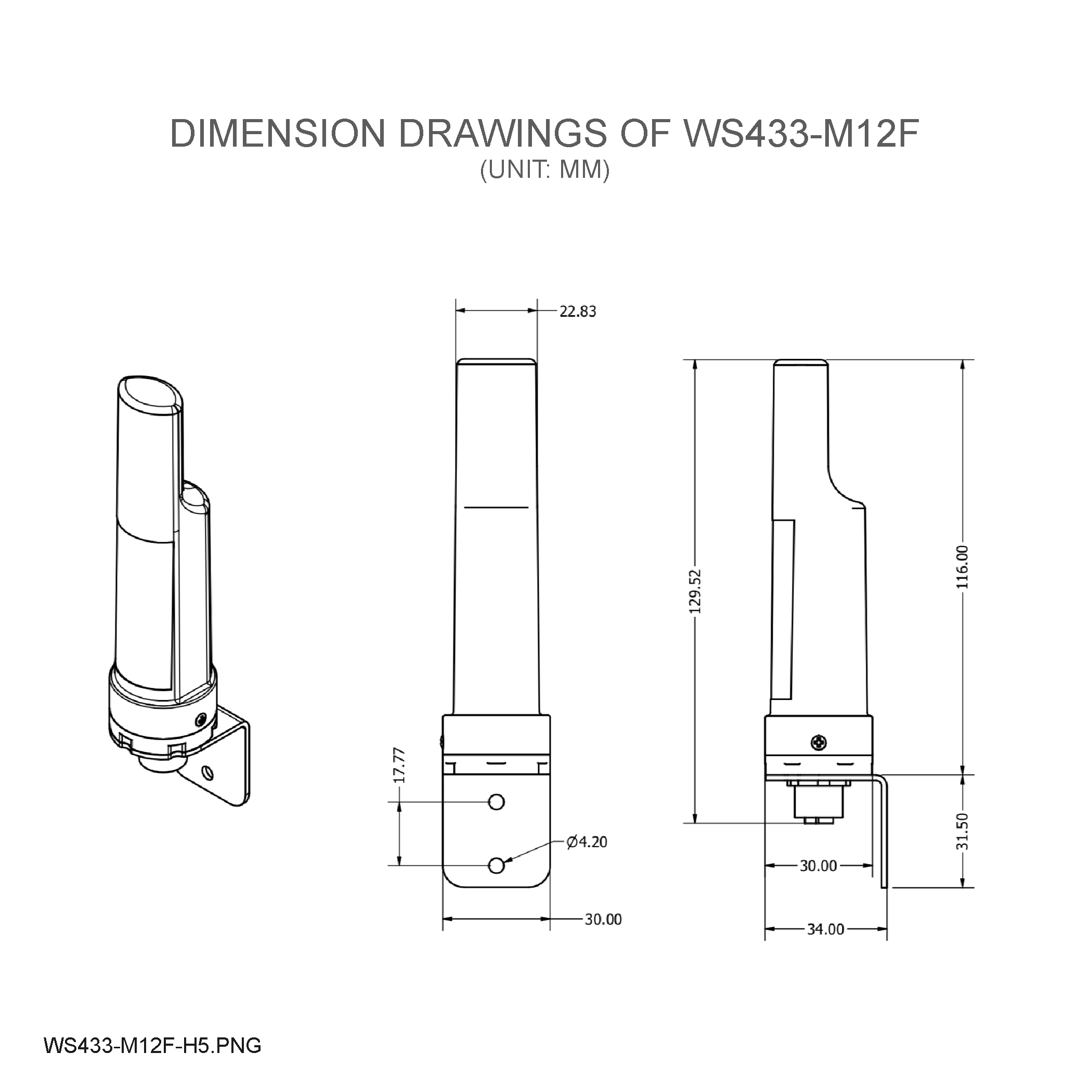 |
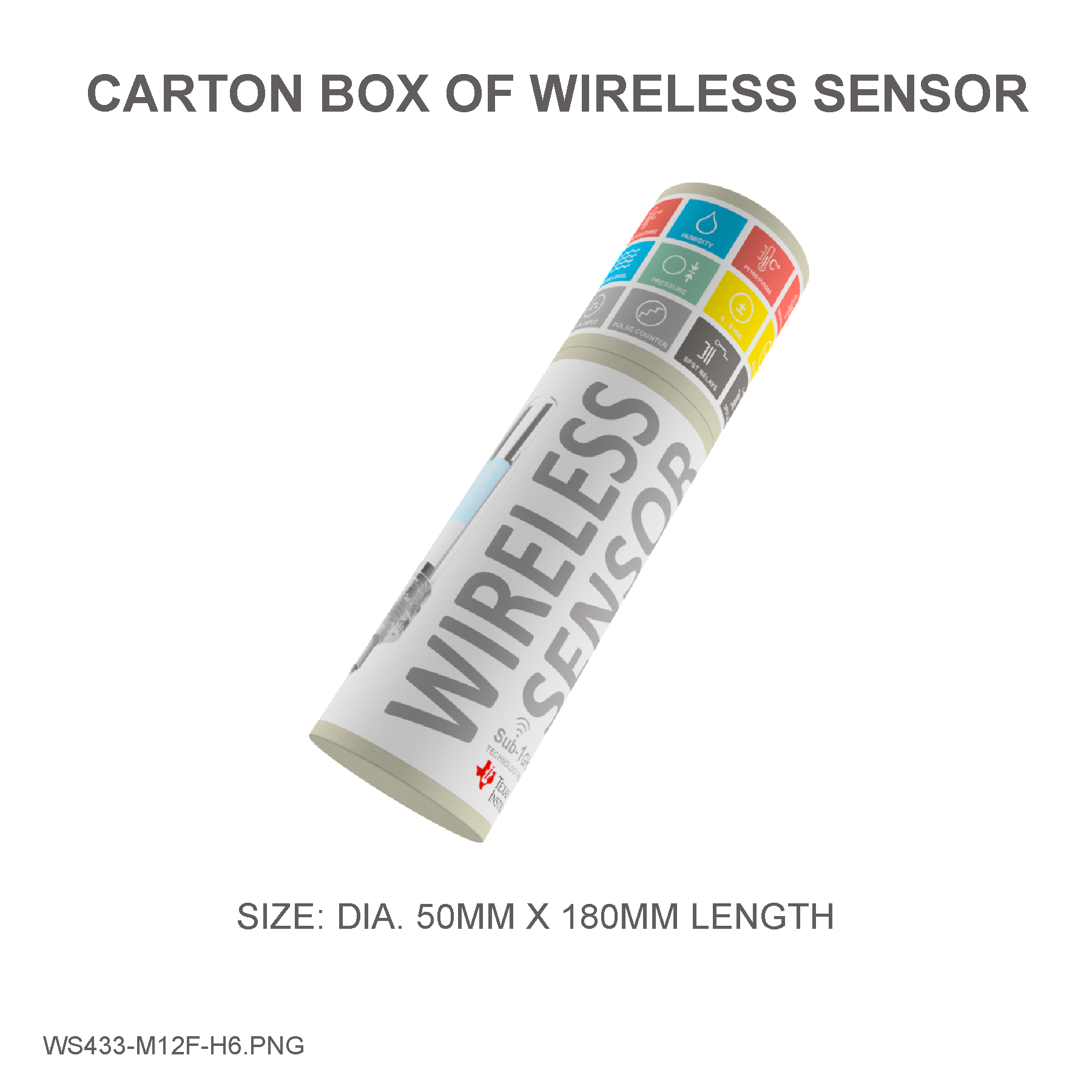 |
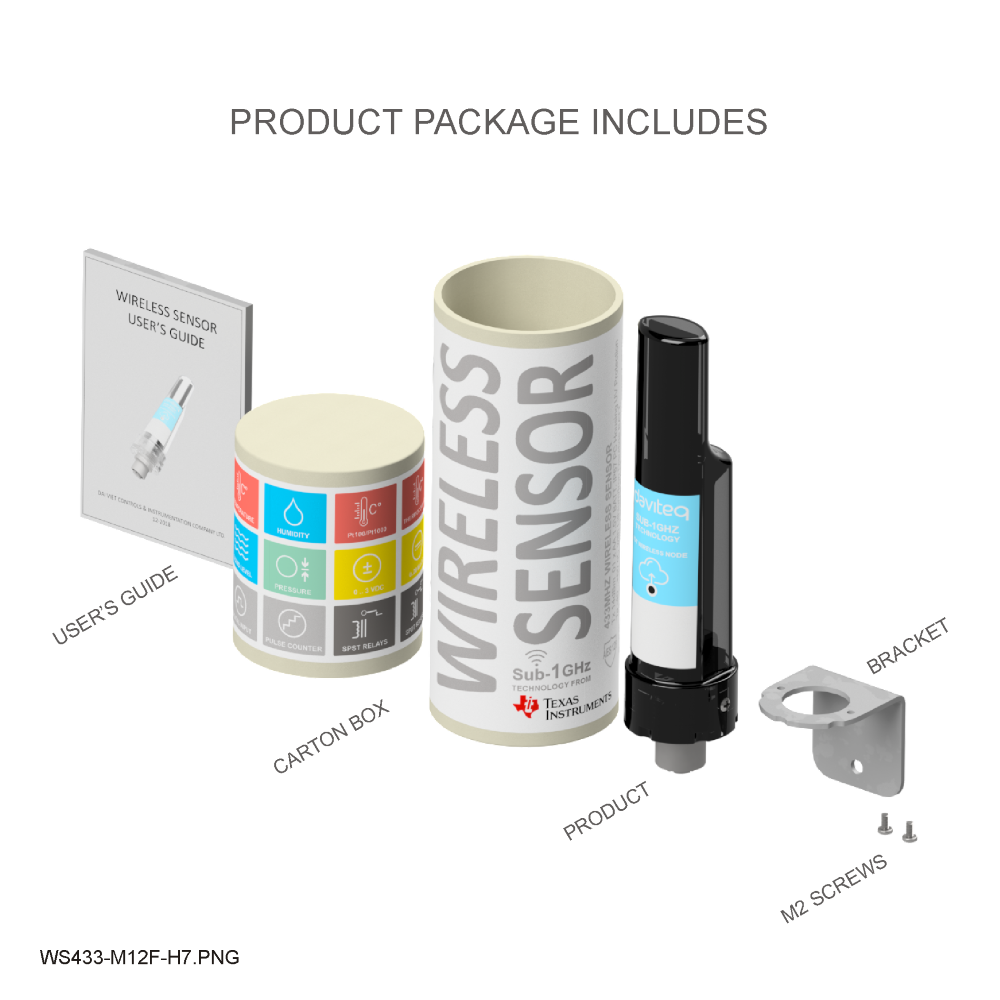 |
 |
5. Operation principle
5.1 Memmap resgisters
You can download Modbus Memmap of WR433 with the following link:
https://filerun.daviteq.com/wl/?id=BKEaUzdArkoc0Hc7nfpRShdPVToVrqQZ
5.2 Process of measurement
When the sensor sampling time interval is reached, for example 2 minutes, the node will wake up and switch ON the power supply to supply the energy to external sensor to start the measurement. Depends on the type and characteristic of external sensor, the sensor will take a certain time to finish the measurement.
For example, the measurement time is 200mS, after this time, the node will read the value of sensor using I2C, node will switch OFF power supply to external sensor to save energy.
Once reading the sensor value, the raw data is X, it can be scaled to any engineering value by the following formula:
Y = aX + b
Where
X: the raw value from sensor
Y: the calculated value for parameter 1's value or parameter 2's value
a: constant (default value is 1)
b: constant (default value is 0)
So, if there is no user setting for a and b ==> Y = X
The Y value will be compared with Lo and Hi threshold.
Status bytes of sensor Node
- Hi-Byte is error code
| Error code | Description |
| 0 | No error |
| 1 |
The wireless sensor has been exchanged sensor probe but it has not been reset yet! ==> please take out the battery for 20s then install it again to reset the wireless sensor to allow it to recognise the new sensor probe!
|
| 2 | Error, sensor port M12F shorted to GND |
| 3 | Error, sensor port M12F shorted to VCC |
| 4 | Error, sensor port M12F shorted each other |
- Lo-Byte is sensor type
| Sensor type | Description |
| 1 | Ambient temperature sensor |
| 2 | Ambient humidity sensor |
| 3 | Ambient differential pressure sensor |
| 4 | Process pressure sensor |
| 8 | Ambient light sensor |
| 11 | Soil moisture sensor with I2C |
| 255 | No sensor |
Logic status of parameters
- Hi-Byte is Logic status of parameter 1
- If parameter 1's value > high threshold 1 => Hi-Byte of Logic status = 1
- If parameter 1's value < low threshold 1 => Hi-Byte of Logic status = 0
- If parameter 1 is digital => Hi-Byte of Logic status = parameter 1's value
- Timer up 1 = (Total time when Hi-Byte of Logic status = 1)
- Timer down 1 = (Total time when Hi-Byte of Logic status = 0)
- RisingEdge counter 1 = (Counter value when Hi-Byte of Logic status changes from 0 to 1)
- FallingEdge counter 1 = (Counter value when Hi-Byte of Logic status changes from 1 to 0)
- Lo-Byte is Logic status of parameter 2
- If parameter 2's value > high threshold 2 => Lo-Byte of Logic status = 1
- If parameter 2's value < low threshold 2 => Lo-Byte of Logic status = 0
- If parameter 2 is digital => Lo-Byte of Logic status = parameter 2's value
- Timer up 2 = (Total time when Lo-Byte of Logic status = 1)
- Timer down 2 = (Total time when Lo-Byte of Logic status = 0)
- RisingEdge counter 2 = (Counter value when Lo-Byte of Logic status changes from 0 to 1)
- FallingEdge counter 2 = (Counter value when Lo-Byte of Logic status changes from 1 to 0)
This wireless module can connect with many kinds of measurement sensor, such as temperature, humidity, pressure, level, flow, RTD input, Thermoucouples input...It automatically detects the attached measurement sensor.
5.3 List of sensor modules used for WS433-M12F :
Ambient Temperature Sensor Module (ATE)
- Feature measuring ambient temperature:
- Measure the ambient temperature, module type IP67
- Measuring range -20 .. + 85 oC
- Accuracy ±0.5oC
- Resolution 0.125oC
Ambient Temperature Sensor Module (ATH)
- Feature of measuring humidity in environment:
- Humidity measuring range & accuracy: 0 .. 100 %RH, +/- 2.0%
- Resolution ±0.1%
- Long-term Drift ±0.25%RH/year
- Feature measuring ambient temperature:
- Temperature Range -40oC to +125oC
- Accuracy ±0.4oC
- Resolution ±0.1oC
Environment differential pressure sensor (ADP)
- Features of measuring environment differential pressure:
- Measurement Range -125Pa to +125Pa
- Accuracy 3% of reading
- Resolution 0.5% of reading
- Feature measuring ambient temperature:
- Temperature Range -40oC to +85oC
- Accuracy 2oC
- Resolution 0.1oC
Process pressure sensor (PPS)
- Pressure measuring feature:
- Pressure Range 0% - 100%
- Accuracy ±0.5% of span
- Resolution 0.008% of span
- Long term stability ±0.3% Span/Year
- Feature measuring ambient temperature:
- Temperature Range -10oC to 80oC
- Accuracy ±1.5oC
- Resolution 0.1oC
WS433 also applies to measurement and control: Digital Input, AC current,....
5.4 Add sensors node to Co-ordinator WS433-CL
5.4.1 Add Sensor Node ID automatically
 |
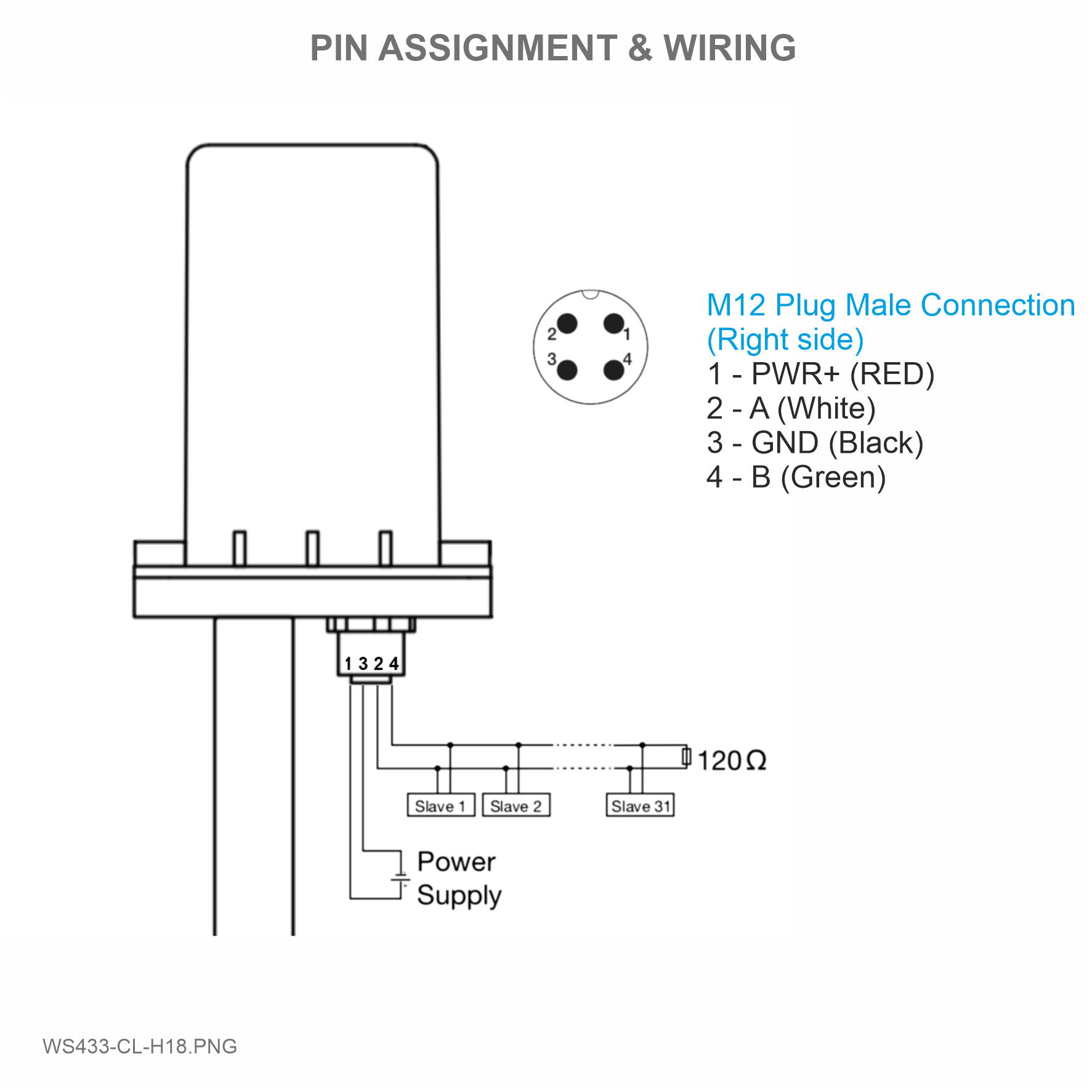 |
Step 1: After supplying power the Co-ordinator via M12 connector, the Node ID must be registered within the first 5 minutes, up to 40 WS.
Step 2: Bring the wireless sensor closer to the Co-ordinator's antenna then take off the wireless sensor battery, wait for 5s then insert the battery again. If:
- Buzzer plays 1 peep sound, LED blink 1 time, that means registering Node ID on Co-ordinator successfully.
- Buzzer plays 2 peep sounds, LED blink 2 times, that this Node ID is already registered.
If you do not hear the "Peep" sound, please disconnect the power the co-ordinator, wait a few minute and try again.
Node id added in this way will be written to the smallest node_id_n address which is = 0.
Set Rssi_threshold (see RF MODE CONFIG (in the Modbus Memmap of WS433-CL-FW), default -25): The case if Co-ordinator is on high position and need to add node sensor. We set the sensor as close as possible and set the Rssi_threshold to -80, -90 or -100 to increase the sensitivity to allow WS433-CL-04 can add sensors at a longer distance. After that, perform 2 steps of adding sensors and then reset Rssi_threshold = -25.
Enb_auto_add_sensors configuration (see RF MODE CONFIG (in the Modbus Memmap of WS433-CL)): In case you do not want to turn off the power WS433-CL, you can set Enb_auto_add_sensors = 1, this way we have 5 minutes to add nodes (add up to 40 nodes) . After 5 minutes Enb_auto_add_sensors will automatically = 0.
Memmap resgisters
You can download Modbus Memmap of WS433-CL with the following link:
https://filerun.daviteq.com/wl/?id=BKEaUzdArkoc0Hc7nfpRShdPVToVrqQZ
5.4.2 Add sensor node into WS433-CL-04 (1) through intermediate WS433-CL-04 (2) and Modbus
In case the sensor need to be added to WS433-CL-04 (1) has been installed in a high position, the sensor cannot be brought close to WS433-CL-04 (1). For more details:
5.5 Button Function
- Step 1: Using Philips screw driver to unscrew M2 screw at the side of housing and carefully pull out the top plastic housing in the vertical direction.
- Step 2: Press the button until you see LED flashes 3 times to reset
- Press and hold the button for 2 seconds => LED blinks once => Release the button to set Data rate RF 50kbps.
- Press and hold the button for 5 seconds => LED blinks twice => Release the button to set Data rate RF 625bps.
- Press and hold the button for 10 seconds => LED blinks 3 times => Release the button to reset RF parameters (frequency, RF output power, data rate), if held for more than 30 seconds then the button function does not work.
Reset default WS433:
- Frequency: 433.92 MHz
- RF transmit power: 15 dBm
- RF data rate: 50 kbps
6. Installation
6.1 Mounting bracket installation
Locate the place where the wireless sensor is mounted, from that locate the position to mount the bracket;
Placing the wireless module on bracket and secure it by 02 x M2 screws (supplied in accessory bag)
Note: The bracket can be mounted on the wireless module in both direction, upward or downward
The mounting bracket is made from hard metallic material. The following steps are for mounting this bracket;
6.2 Installation location
The bracket will be fixed on the wall or material with a flat surface with double-sided 3M tape (included in the accessory bag in a carton box) or 2 x M4 screws (supplied by the customer);
When using 3M double sided tape, please install the sensor at a height of 2 meters or less.
ATTENTION:
DO NOT install the Wireless sensor or its antenna inside a completed metallic box or housing, because the RF signal can not pass through the metallic wall. The housing is made from Non-metallic materials like plastic, glass, wood, leather, concrete, cement…is acceptable.
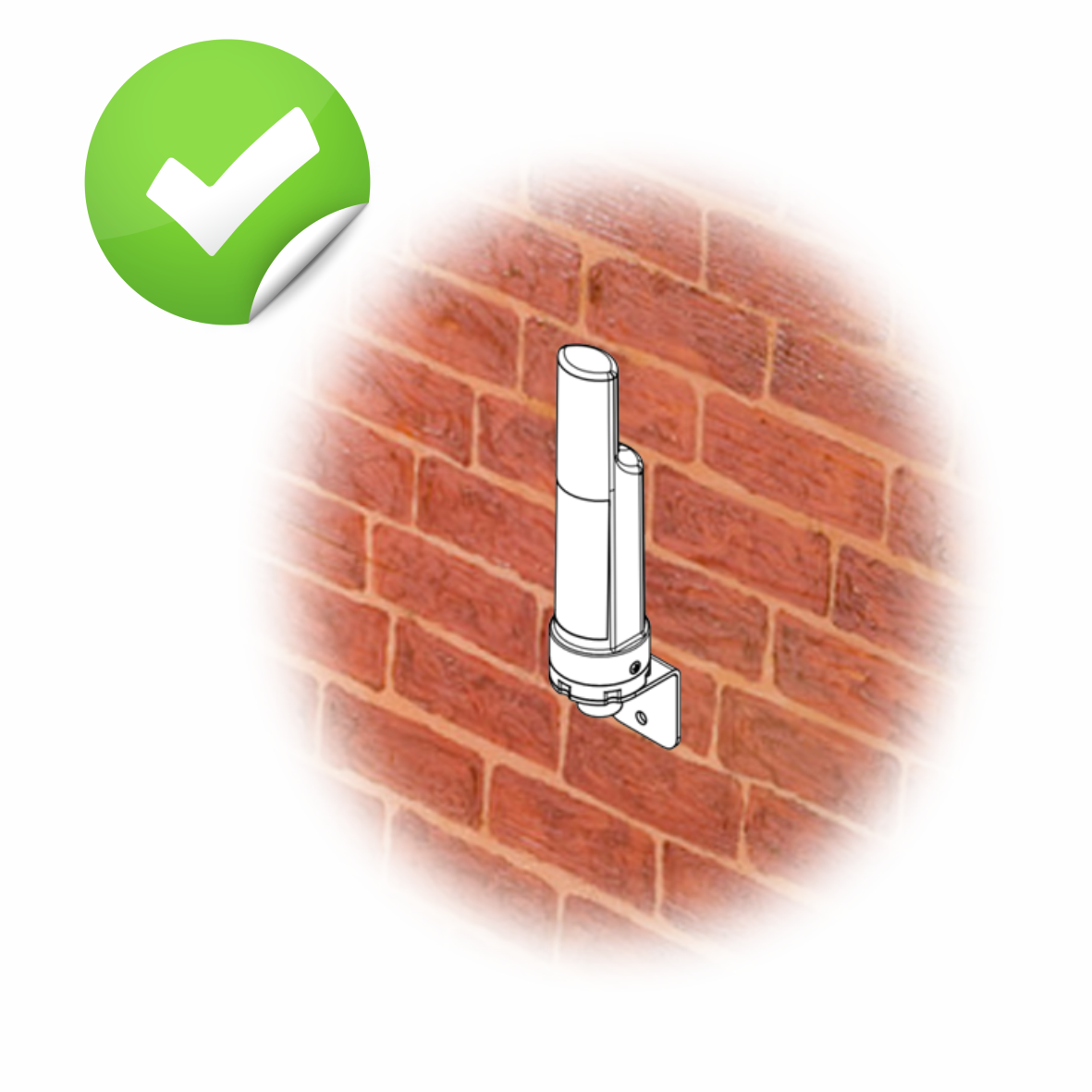 |
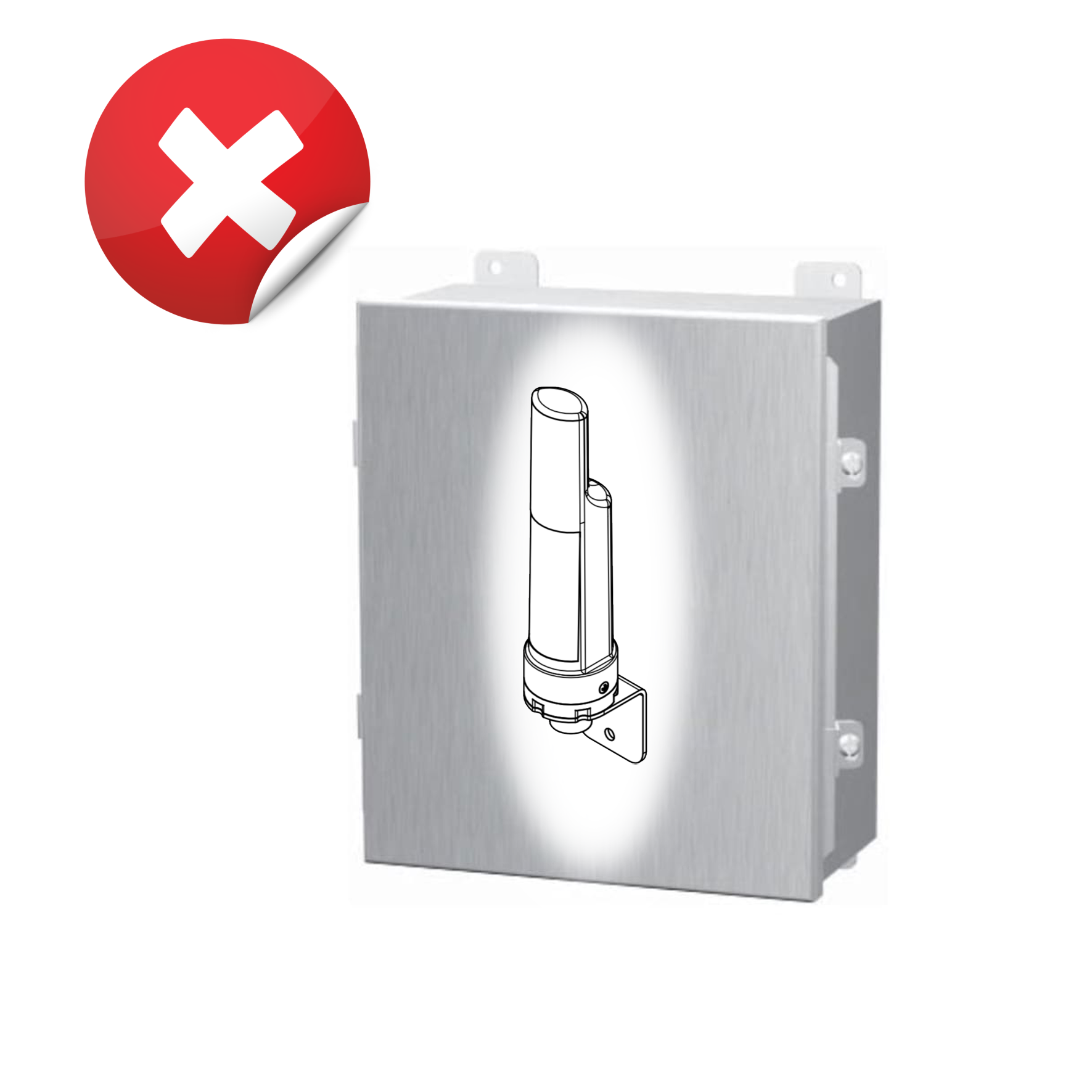 |
6.3 IO Wiring & Sensor installation
The sensor module has M12-male connector which is matched with M12-female connector on wireless module;
Carefully plug the sensor module onto wireless module, using HAND to tighten slowly until stop;
ATTENTION:
Please DO NOT over tightening by hand or other tool, it can damages the M12 connector;
6.4 Power Supply & Battery installation
Steps for battery installation:
- Using Philips screw driver to unscrew M2 screw at the side of housing
- Carefully pull out the top plastic housing in the vertical direction
NOTE: Because of O-ring, it requires to have much pulling force at the beginning, therefore please do it carefully to avoid the damage of circuit board which is very thin (1.00mm);
- Insert the AA battery, please take note the poles of battery
- Insert the top plastic housing and locking by M2 screw
7. Troubleshooting
| No. | Phenomena | Reason | Solutions |
| 1 | The status LED of wireless sensor doesn't light up |
|
|
| 2 | Wireless sensor not connected to co-ordinator |
|
|
| 3 | The parameter 1 and 2 both show values = 0, while the data status is normal (running from 0..5) |
|
|
8. Support contacts
|
Manufacturer Daviteq Technologies Inc Email: info@daviteq.com | www.daviteq.com
|
Distributor in Australia and New Zealand Templogger Pty Ltd Tel: 1800 LOGGER Email: contact@templogger.net |

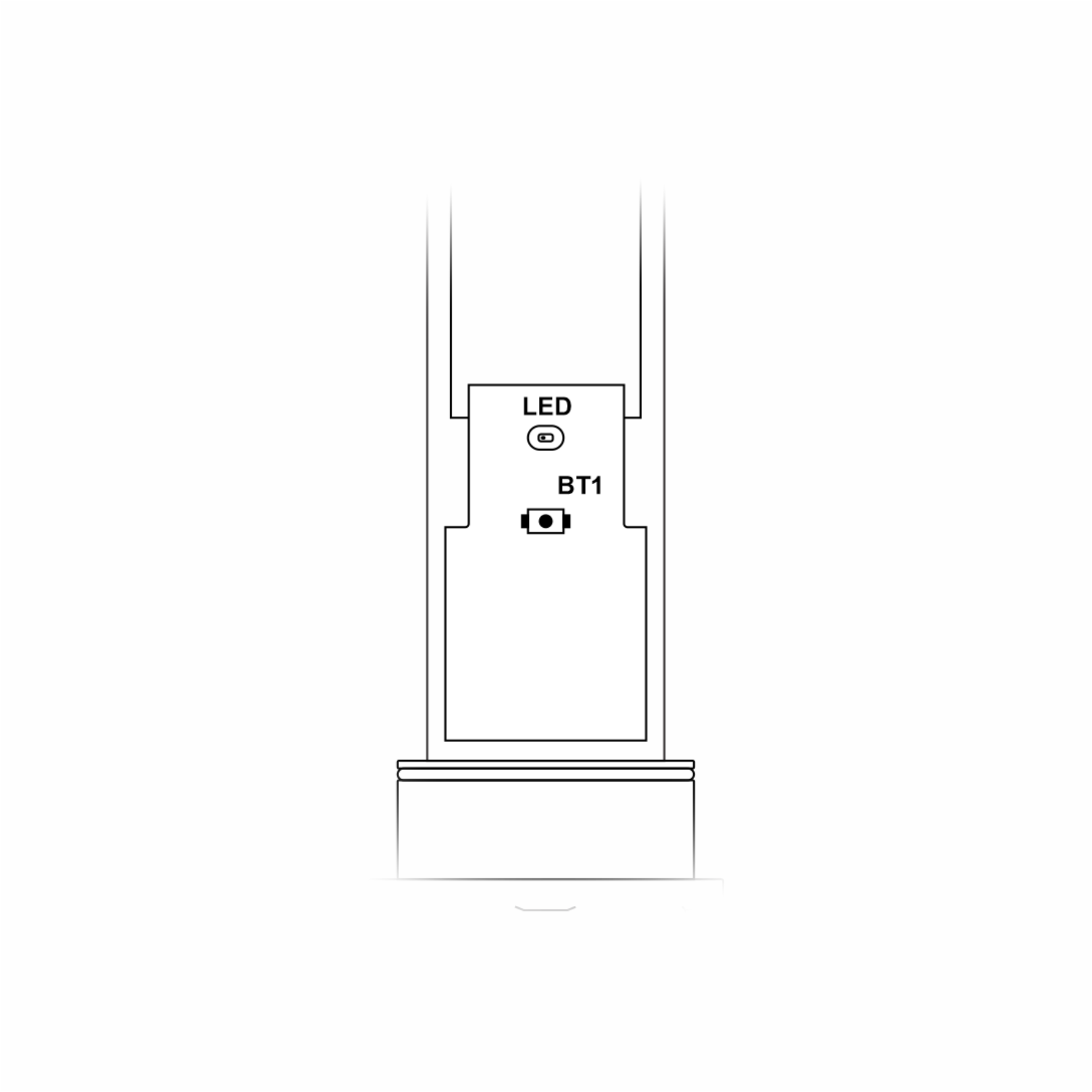
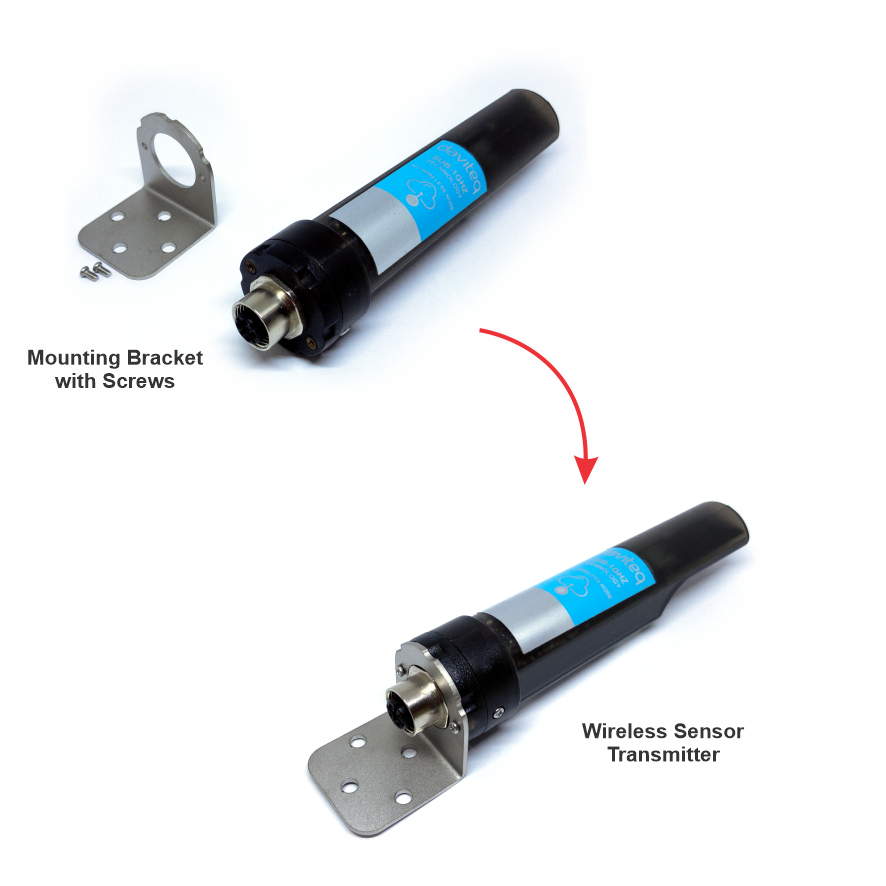
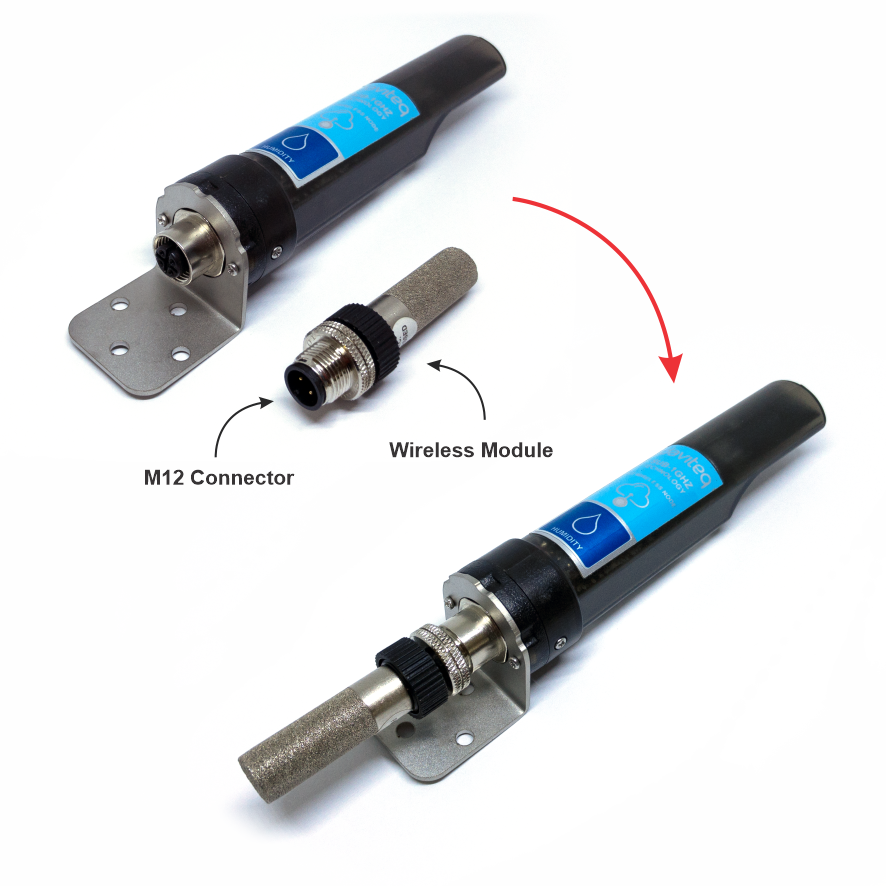

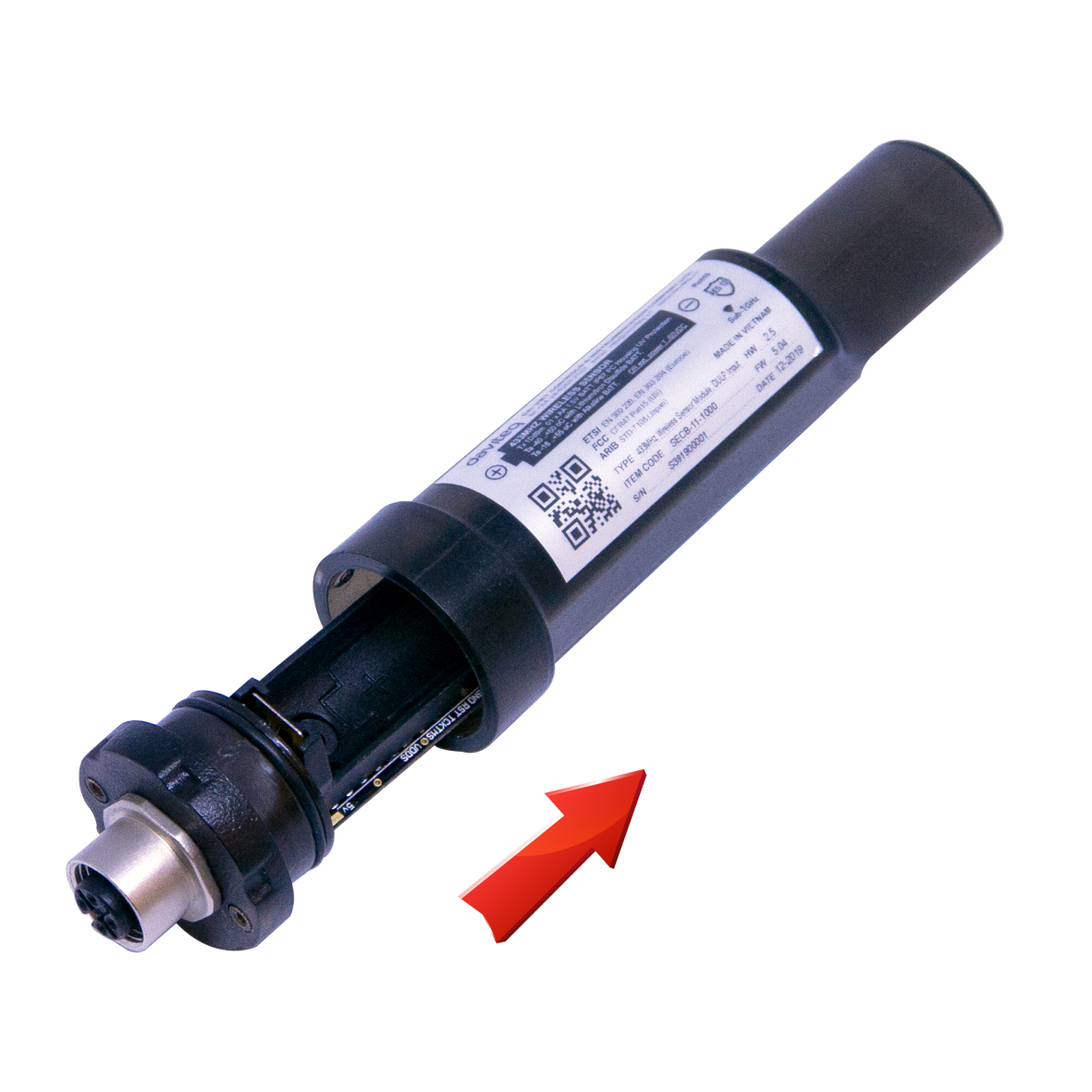
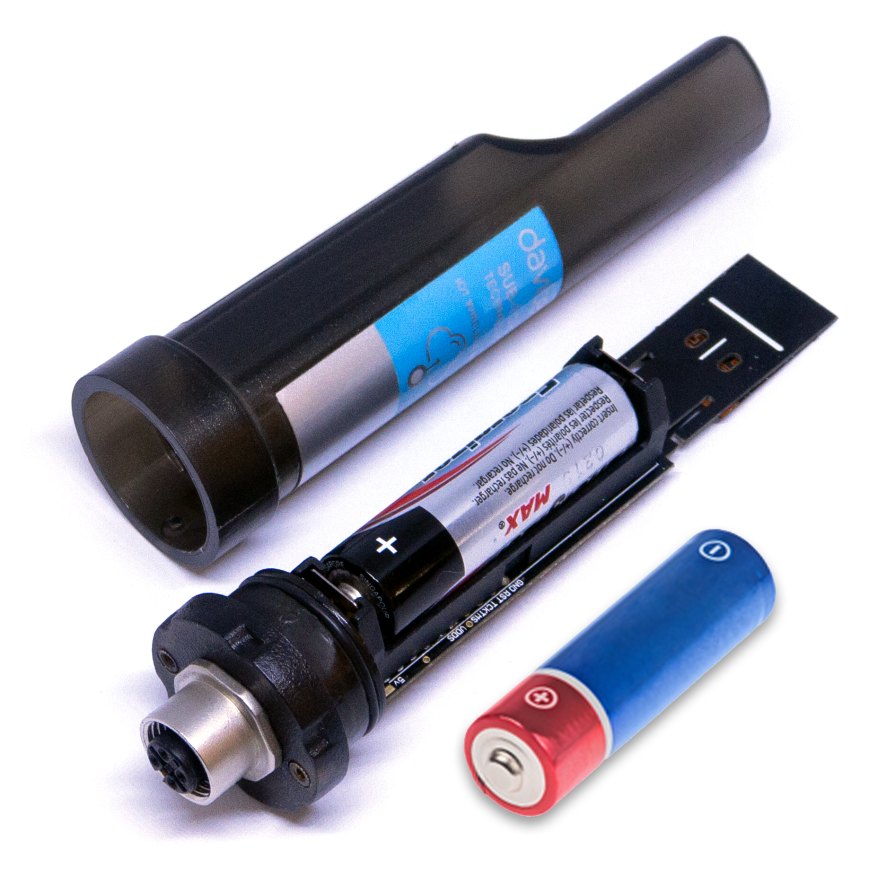
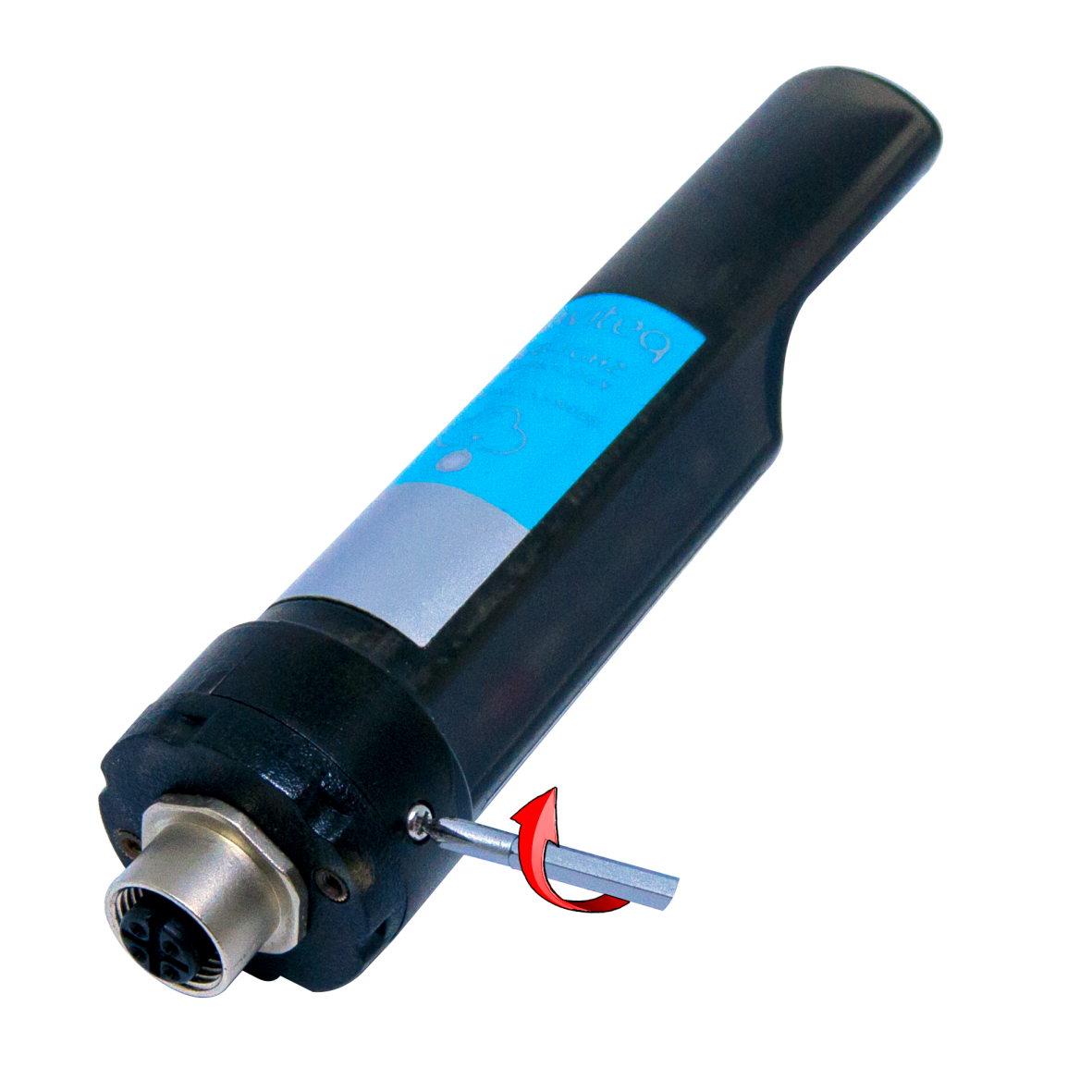


No Comments